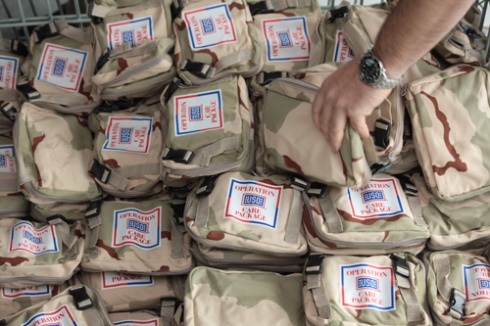This week marks the 10th anniversary of the United States’ invasion of Iraq.
While American forces have been out of that country for more than a year, the legacy of the war is still sorting itself out.
[caption id=“” align=“alignright” width=“309”] USO photo[/caption]
USO photo[/caption]With the absence of a draft, the conflict pushed America’s all-volunteer force to bear its greatest burden to date, with multiple deployments becoming a large concern on the home front. While the death toll was comparatively low when pitted against previous American conflicts, the extent of the injuries – both mental and physical – were unlike anything the country had openly dealt with before.
But while warfare evolved, one thing didn’t change. Through the last decade, the USO was by the side of our troops on the battlefield and their families at home.
We were there providing millions of phone calls home.
We were there delivering the comforts of home to desert battlefields.
We were there with a video connection to the delivery room when babies were being born.
We were there when the dread of losing a loved one came into focus in the form of a temporary casket being transferred on the tarmac at Dover Air Base, Del.
And we were there when America’s heroes returned, hosting happy homecomings at airports for the majority of troops who made it back unscathed and providing programs for others to deal with the physical and invisible wounds of war. To better confront these issues facing wounded, ill and injured troops, the USO conceived and constructed two Warrior and Family Centers to help them and their families both recover and get on the right track to rewarding lives and new careers.
Thanks to the generous support of the American people, the USO was always by the side of our troops and families during the Iraq War. And we’ll continue to be there, wherever they go.
–Story by USO Story Development
Join us in supporting the people who serve by strengthening their well-being wherever their mission takes them.